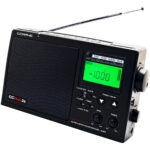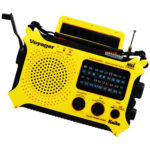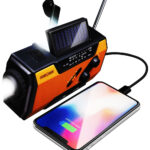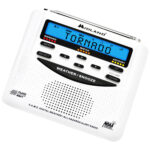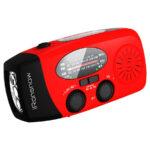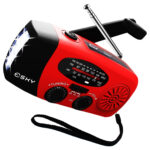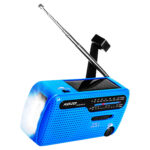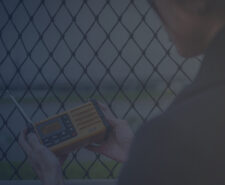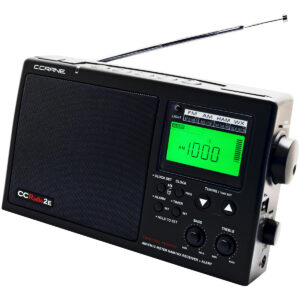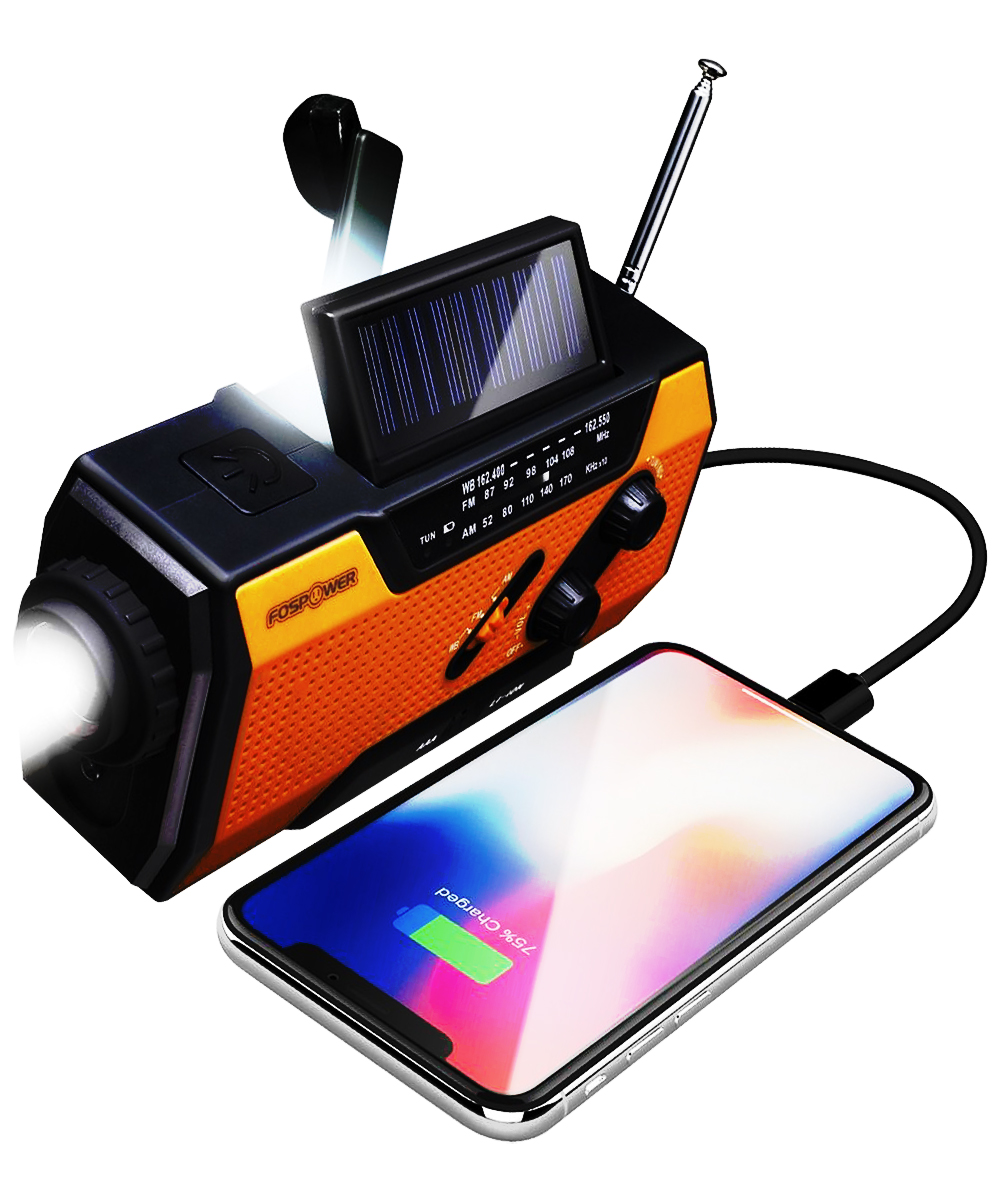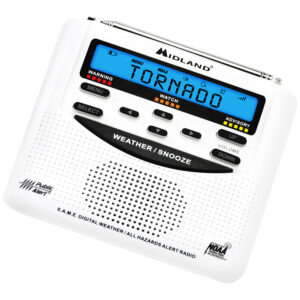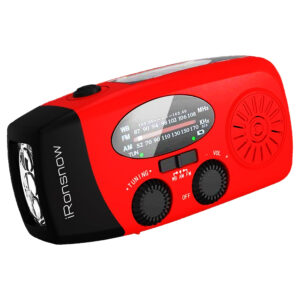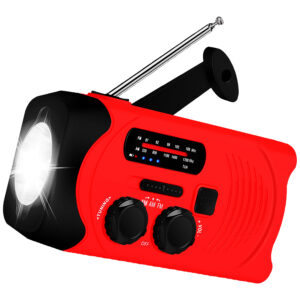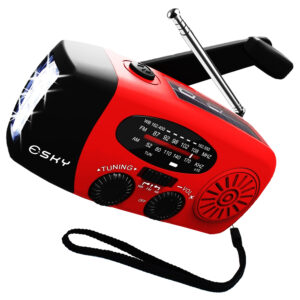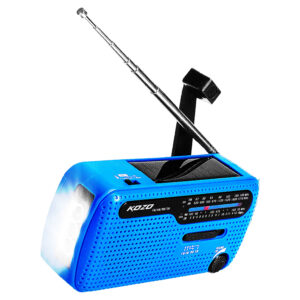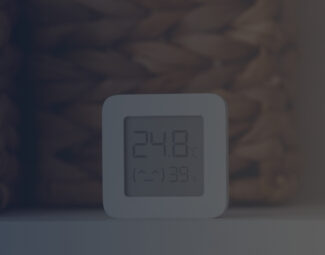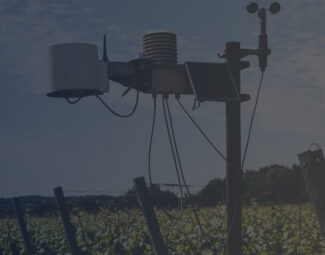1. C. Crane CC2BE
Check Price at Amazon
Specifications:
- NOAA government emergency broadcast alerts:
- Frequency coverage: AM: 520-1710 KH; FM: 87.5-108 MHz; Ham: 144-148 MHz; WX: 1-7 CH
- Controls type: Buttons
- USB charging port:
- LED Flashlight:
- Power/charged by: 4 x D-size batteries; AC
- Battery runtime: 250 hours
- Dimensions: 11” x 6.5” x 4”
- Weight: 4 pounds
- Warranty: 1 year
Sound has never been more accurate than with this radio, specially intended to boost weak AM signals and help you stay informed. Able to run for days, even if the power is off, it will catch any alert issued by NOAA through the weather band, so you know what measures you should take to remain safe.
The sound level can be adjusted, and you will be able to listen to radio shows or music, which will sound crisp and clear, even if the signal is weak.
Twin-Coil Ferrite AM Antenna
When you are in an isolated area, it can be hard to get a good signal on your radio, and if you find yourself in a situation when the power is off or the communications are limited, you won’t be able to keep up with the news. Luckily, this model comes with a patented technology that uses a performant antenna to enhance your experience in a few simple steps:
- It detects the signal and evaluates it
- Determines which signal is better and locks it in
- Boosts signal power and delivers increased sound quality
Furthermore, it is designed to work on batteries, and a set of 4 Ds will last you for up to 250 hours, which is one of the most extended run periods you will find on this device. An AC power cord is also included, so you can plug it in if you wish to use it daily for music or news.
Highlights
- Battery run time – 250 hours
- Frequency coverage - AM: 520-1710 kHz/FM: 87.5-108 MHz/Ham: 144-148 MHz/WX: 1-7 CH
- Charging method – D-sized batteries
- Warranty – 1-year
2-Meter Ham Band
Vital information regarding weather conditions, hurricanes, tornadoes, earthquakes, and other natural disasters are issued by NOAA and transmitted via the weather band. With C. Crane CC2BE you will never miss any of these alerts, as it comes with a 2-meter Ham band, designed to catch the signal and increase sound accuracy. Furthermore, it includes many features that will prove useful in daily activities or when emergencies strike:
- Adjustable display light
- Clock alarm
- Sleep timer
- Auto scan
- 5 one-touch memory presets per band
The 5 memory buttons placed on top help you manage stations with ease, while the backlight guides you in the dark, allowing you to adjust the brightness. Moreover, this unit weighs no more than 4 lbs., so can take it on walks or trips.
You should acquire an indoor outdoor thermometer to monitor temperatures regardless of where you are. Perfect for camping, trips, and mountainside adventures, among others, these thermometers are precise and built to withstand the harshest conditions, managing to appraise temperature conditions whenever needed without problems.
C. Crane CC2BE Performance – Tester’s Feedback
Likely the most notable highlight stands in the AM and FM reception since this radio let me listen to stations that were several states away. It’s easy to manually fine-tune using the knob that you simply turn as needed to single out the frequency, no matter how crowded it gets. My only complaint after testing the C. Crane CC2BE for several days is that while the audio is of good quality, it could use some improvement when it comes to the bass response. There were no actual reports of emergencies while I tested it, but from the reviews I’ve read from customers who have had the radio for a while now, it does send out the alerts whenever these are issued by the NOAA to keep people out of harm’s way.
Lillian Davies – Product Tester and Reviewer
PROS
- The Twin-Coil Ferrite antenna enhances the radio’s AM reception and performance
- Rotary bass and treble controls let you adjust audio quality as you prefer
- Full backlight display that you can pick 3 levels of brightness for or set it off
- Features five one-touch memory presets per band
VERDICT
You can count on the C. Crane radio to amplify the strength of weak signals and produce crisp audio. The CC2BE is the flagship model of this renowned manufacturer because of its superior design and the revisions it has received to improve performance and audio quality. The audio is tuned for the spoken word, and what impresses most stands in the twin-coil ferrite antenna that amps AM performance, making it unparalleled from this point of view.
2. Kaito KA500
Specifications:
- NOAA government emergency broadcast alerts:
- Frequency coverage: AM: 530 -1710 KH; FM: 88 - 108 MHz; NOAA Weather: 1-7 CH; SW1: 3.20-8.00 MHz; SW2: 9.00-22.00 MHz
- Controls type: Dial & Knob
- USB charging port:
- LED Flashlight:
- Power/charged by: Solar power; Dynamo crank; 3 x AA batteries; 5V USB input; 5V AC/DC input
- Battery runtime: 4 hours
- Dimensions: 8.25″ x 5″ x 2.25″
- Weight: 1.65 pounds
- Warranty: 1 year
A weather radio is supposed to serve in more ways than one, proving to be a quintessential tool for emergencies, keeping you prepared in case any weather-related disaster is imminent. The Kaito KA500 is one of the best at the moment since
it’s not only designed for emergency preparedness applications but normal daily use as well. It even integrates a few features that expand its usability, getting you out of trouble in more situations than you could have hoped for.
- Works as a charger: Use it to power your smartphone, tablet, MP3 player, basically any device that can be charged via the USB port.
- Reading lamp: The 5-LED lamp located on the backside of the solar panel comes in handy for illuminating the pages of your favorite book so that you can have the time pass more pleasantly when you camp.
- Flashlight: Use it as a source of illumination even when there’s no lighting on your path.
- Wide range of broadcasting: Includes 7 preset NOAA stations, AM, FM, shortwave.
The radio is powered by three 600 mAh NiMH rechargeable batteries that you can power in five different ways, namely:
- Solar power via the included 180-degree adjustable solar panel;
- Dynamo hand crank;
- Three AA batteries (these are not included);
- An AC adapter;
- The USB cable that you can hook up to a laptop, for example.
The rubberized housing withstands exposure to rain and generally harsh conditions since it’s weather resistant. The multiple dials and knobs make it fairly intuitive to use even for users who have never had acquaintance with an emergency radio before. In terms of backing, the manufacturer has it covered against defects for 1 year after you make the purchase.
PROS
- Can be used as an emergency mobile battery charger
- Features 7 pre-programmed NOAA weather stations
- The rubberized housing is water-resistant
- Dynamic wide range speaker for superior sound quality
CONS
- Lacks an external antenna jack, so you can’t improve reception
- Flimsy hand crank
VERDICT
An emergency and disaster radio must receive a wide range of broadcasting and have multiple means for power. Since the Kaito KA500 complies with these demands and more, it comes as no surprise that it’s the runner-up. What you are sure to like most is the radio’s enhanced versatility that is granted by the multiple accompanying features, like the 5-LED lamp that you can use to read while you’re camping, and the SOS emergency light that you can use to signal your location if you ever get lost.
3. FosPower FOSPWB-2376
Check Price at Amazon
Specifications:
- NOAA government emergency broadcast alerts:
- Frequency coverage: AM: 520-1710 KHz; FM: 87 – 108 MHz; WB: 162.400-162.550 MHz
- Controls type: Dial
- USB charging port:
- LED Flashlight:
- Power/charged by: AAA batteries; Solar panel; Manual hand crank
- Battery runtime: N/A
- Dimensions: 6.2” x 2.9” x 2.1”
- Weight: 10.9 ounces
- Warranty: Lifetime
You will never run out of power with this product, as it is not only able to stay always charged thanks to the several incorporated charging methods, but
it can provide energy for your phone or tablet when the power goes down. Moreover, it features many attractive features designed to increase its usability and offer you all the necessary information in case of crisis.
The radio’s purpose is to keep you posted with everything that’s happening around you so you can make the best decisions to protect yourself against harsh weather conditions or natural disasters, so it should be running and screening for alerts even when the power is off. With FOSPWB-2376 you won’t ever have to worry that you will remain in the dark, as it features multiple charging methods:
- Solar Panel – permits you to use solar energy to keep your device running
- AAA Batteries - available whenever you cannot charge it by the sun
- Crank lever – offers an inexhaustible source of energy, as it permits you to charge your radio manually
Plus, for daily activities, there is always the plug-in cord that ensures a reliable, long-lasting power source. Two light sources are always available and powered by the same energy sources, a 4-LED reading light and a flashlight that provide a great output for you to find your path in the dark when the emergency strikes.
- Frequency coverage - AM: 520-1710 KHz/FM: 87 – 108 MHz/WB: 162.400-162.550 MHz
- Warranty – Lifetime
When the power goes down, you don’t necessarily have to renounce your tablet or phone, as this radio comes with a 2000mAh power source that can keep small communication devices running for you to keep in touch with your family or be able to call for help if you are hurt or in danger. Moreover, it incorporates other features that will prove useful in these cases:
- NOAA weather broadcasts access
- SOS Alarm
- Weather resistance
Furthermore, it comes with a lifetime guarantee for parts and repairs, so this investment will pay off soon, and you will get long-lasting help that will get you through any emergency, keeping you safe and in touch with your loved ones. It even exceeds the C. Crane CC2BE when it comes to warranty length, which says a lot considering that the aforementioned is the top weather radio at the moment, produced by what all experts consider the leading manufacturer on this market.
PROS
- The incorporated 2,000 mAh power bank can be used to charge your phone or tablet
- There are 3 different power sources usable to charge it
- The crank lever ensures the radio never runs out of power since you can manually “juice” it up
- Features 2 integrated light sources – a 4-LED reading light and a 1-watt LED flashlight
CONS
- The solar panel is weak, it takes too long to provide a decent charge
- The turning knobs are a bit difficult to handle
VERDICT
Aside from its basic use, broadcasting alerts whenever there’s an emergency and your safety might be put at risk, this FosPower radio serves different purposes too. It is fitted with a reading light and a flashlight, so you can use the lighting means that best suits the situation at hand. It can be used as a means to charge other devices, so you won’t ever run out of phone battery when you need to make an urgent call. Moreover, the audio on this radio is impeccable, so you can listen to your favorite AM/FM stations when you’re on the road to have the time pass by more pleasantly.
4. Midland WR120B/WR120EZ
Check Price at Amazon
Specifications:
- NOAA government emergency broadcast alerts:
- Frequency coverage: WB: 162.400-162.550 MHz
- Controls type: Buttons
- USB charging port:
- LED Flashlight:
- Power/charged by: 3 x AA batteries; AC
- Battery runtime: 5 hours
- Dimensions: 6” x 1.5” x 5”
- Weight: 1 pound
- Warranty: 1 year
Designed not to miss any important event, this radio links to no less than
7 NOAA channels and alerts you every time a warning is issued for your area. You will be able to avoid getting caught in the middle of hurricanes or floods, and this device may even save your life as it powers on instantly every time it gets an alert.
- Battery run time – 5 hours
- Frequency coverage – WB: 162.400-162.550 MHz
- Charging method – AA batteries
- Warranty – 1-year
It is practically impossible to be always alert and listen to the radio. Moreover, you may not be next to it when the alert is issued, so a device that can do a lot of noise and signal the emergency both visual and through sounds is more than welcomed. This radio turns on every time weather becomes threatening around you and alerts you through 3 methods:
- 90 dB Siren – loud enough to wake you up
- Voice Alert – repeats the alert multiple times
- Flashing LED – great for noisy environments, where the siren may get covered by other noises
More important than getting information is getting pertinent information, and this proves possible with this Midland product thanks to its incorporated S.A.M.E. alert programming that only triggers the alarm if the natural disaster is happening in specific counties that are close to you. This way, you won’t have to constantly screen through interminable alerts to find the one that targets your area. Furthermore, it alerts you on over 60 natural emergencies, so you can protect yourself against:
- Tornados
- Floods
- Fires
- Earthquakes
- Snow Storms
Other useful features are the built-in clock with alarm and snooze function, the alert level indicator, which uses 3 colors to show how serious the emergency is, and the LCD screen designed to assist you with alarm customization and other settings.
PROS
- Alert override will automatically switch over when needed to warn you of any upcoming danger
- You can customize the alerts that the radio should warn you about
- Features a built-in alarm clock that you can snooze
- The 90 dB siren sounds off quite loudly when there’s an emergency situation so that you won’t accidentally miss the alert
CONS
- It’s a bit complicated to program
- You should install an external antenna for it to work in fringe areas
VERDICT
Get your weather report direct from the NWS with this sought-after Midland radio that ensures you won’t ever miss an alert since it sounds off a very loud 90 dB alarm when you need to be aware of an emerging situation. Programmable for 25 different counties and even allowing you to customize what events it should provide warnings for, it’s a must-have regardless if you live in an area where natural disasters and other events of the sort are often or not.
5. iRonsnow TS-IS-088-R
Check Price at Amazon
Specifications:
- NOAA government emergency broadcast alerts:
- Frequency coverage: AM: 525-1710 KHz; FM: 88-108 MHz; WB: 162.40-162.55 MHz
- Controls type: Dial
- USB charging port:
- LED Flashlight:
- Power/charged by: 1000mAh battery; Hank crank; Solar power; USB
- Battery runtime: N/A
- Dimensions: 5” x 2.4” x 1.6”
- Weight: 7.84 ounces
- Warranty: 1 year
This compact radio will save you a lot of trouble during hurricane season by informing you when a natural hazard approaches your area. Designed to follow NOAA broadcasts, it comes with a
performant antenna that extends and traps signals for better and more accurate transmission. Moreover, you can use it as an entertainment source as it offers access to FM/ AM bands so you can listen to music or radio shows.
If you find yourself in an isolated area, away from your family and friends, you might want to contact them and let them know that you are all right when a disaster hits your county. Here’s where a power bank proves useful as it can provide energy for your phone. Moreover, the radio will stay powered and will keep you up to date thanks to its numerous incorporated power options:
- Micro USB
- Solar Panel
- Hand Crank
A 3-LED flashlight is also available, and it produces good output, so you can see in the dark if you are camping or the power is down in your house. Moreover, it weighs only 7.84 ounces, so you won’t even feel you are carrying it around in your bag.
- Power Consumption – 0.5W
- Frequency coverage – AM: 525-1710 KHz /FM: 88-108 MHz /WB: 162.40-162.55 MHz
- Warranty – 1-year
It has access to NOAA weather reports, and it is equipped with everything it needs to stay running and alert, so you don’t miss any life-saving information. Furthermore, it comes at an accessible price and is backed by a 1-year warranty, so we would say this is a safe, long-term investment.
PROS
- Use it to charge your smartphone using a micro USB cable
- Three ways to recharge it – USB, hand crank, solar power
- Small and lightweight – perfect for backpacking
- Backed by a 1-year warranty
CONS
- Doesn’t hold charge properly with time
- Takes a bit more cranking to get a good charge as opposed to other radios
VERDICT
This iRonsnow alert radio is one of the smallest and lightest available yet, so if you are the frequent camper, it’s just the right tool to have in your backpack. It even doubles as a flashlight thanks to the 1-watt LED light it features, and it serves as a means to charge your phone whenever it’s running out of power.
6. RunningSnail MD-088s
Check Price at Amazon
Specifications:
- NOAA government emergency broadcast alerts:
- Frequency coverage: AM: 520-1710 KHz; FM: 87-108 MHz; WB: 162.400-162.550 MHz
- Controls type: Dial
- USB charging port:
- LED Flashlight:
- Power/charged by: Micro USB; Solar panel; Manual hand crank
- Battery runtime: 4-5 hours
- Dimensions: 5” x 2.4” x 1.8”
- Weight: 0.49 pounds
- Warranty: 1 year
When disaster strikes, you will first want to find a retreat for yourself and then let your loved ones know that you are safe. However, hazards often come with power outages, and if your phone isn’t charged you may lose contact with your family. This is the reason, MD-088s was
equipped with a 1000mAh power bank that can charge an iPhone or phone by using the Micro-USB cable and permits you to transmit and receive important information.
- Battery run time – 4-5 hours
- Frequency coverage – AM: 520-1710 kHz /FM: 87-108 MHz /WB: 162.400-162.550 MHz
- Warranty – 1-year
It’s very small and lightweight, just like the iRonsnow TS-IS-088-R, so it makes for a dependable buddy when you’re hiking or backpacking. It is ready for any natural hazards, and it won’t stop screening for alerts even when the whole area runs out of power. Provided with 3 charging methods, you will be able to use it practically for an infinite amount of time, so it will prove extremely useful, especially if you find yourself in an isolated area:
- Micro USB – powers the internal battery and permits it to run for hours
- Solar Panel – captures solar energy for power
- Hand Crank – best energy source, as it only needs a bit of your muscle force to charge the internal battery
It is linked to NOAA channels, so it will transmit weather alerts as soon as they are issued. Furthermore, it is compact and lightweight, so you can easily throw it in your bag every time you go on a trip, especially if it implies mountain roads or the crossing of isolated areas. The 1W LED will provide light whenever there’s no power, and you will be able to listen to music and keep your family entertains, as it catches AM/FM stations as well.
PROS
- Glow in the dark locator – never misplace or lose it
- Takes only 3 to 5 hours to fully charge the battery via micro USB
- Pocket-size radio that’s perfect for hiking and camping
- Bright flashlight is perfect for walking outside when it’s dark or handling the situation during a power outage
CONS
- It’s a bit difficult to tune the radio
- It doesn’t provide a fast charge for your phone
VERDICT
Whether it’s a compact power bank, emergency radio, small flashlight, or just a classic radio that you can fit in your pocket that you’re looking for, the RunningSnail fits your criteria. Moreover, it’s a very cheap purchase, so you won’t have to worry that this small and ingenious tool might set you back a lot on your finances. Given the price and reliability of this product, it’s no wonder that it has become so popular.
7. Esky ES-CR01
Check Price at Amazon
Specifications:
- NOAA government emergency broadcast alerts:
- Frequency coverage: AM: 520-1710 KHz; FM: 87-108 MHz; WB: 162.40-162.55MHz
- Controls type: Dial
- USB charging port:
- LED Flashlight:
- Power/charged by: 500mAh lithium battery; USB cable; Solar panel; Hand crank
- Battery runtime: N/A
- Dimensions: 5” x 2.4” x 1.8”
- Weight: 0.49 pounds
- Warranty: 1 year
This is
both an emergency radio and a flashlight, and you will find its powerful light output of 140 lumens more than sufficient in moments of crisis when the storm hits and all the lights go down. Designed to be carried around, it is compact and lightweight, so you can easily take it with you to your shelter and remain informed until the danger passes.
- Power Consumption – 3W
- Frequency coverage – AM: 520-1710 KHz /FM: 87-108 MHz /WB: 162.40-162.55MHz
- Charging method – 1000mAh Lithium battery/USB/Solar panel/Manual hand crank
- Warranty – 1-year
Reliable information is what matters the most, and with Esky ES-CR01 you will get the weather reports no matter if they are broadcasted by NOAA or local/ national radio news stations. This will help you prepare and hide if one of the following disasters threatens your area:
- Earthquakes
- Fires
- Extreme Cold
- Thunder Storms
- Hurricanes
Depending on the situation, you may need to charge your battery in different ways. Blackouts often accompany a natural hazard and the usual outlet charging won’t work in these situations. However, Esky ES-CR01 is specially designed to stay powered no matter if there’s no power or you find yourself lost into the wild, through 3 innovative charging methods:
- Rechargeable 1,000 mAh Lithium Battery – delivers up to 16 hours of continual run
- Solar Panel – transforms solar energy into electrical energy
- USB ports – for conventional charging
- Hand Crank – provides kinetic energy that is transformed into electric power
PROS
- IPX3 water resistance rating adds to the product’s longevity even in harsh environments
- Lasts for a long time when used as a radio if it’s on a full charge
- Solar power charging option makes it perfect for camping
- Comes at a reasonable price
CONS
- Analog tuner
- Sound quality is inferior to that of its better-ranked opponents
VERDICT
Just because this Esky radio does not cost much, it does not mean it will not deliver performance-wise. In fact, it’s quite a worthy option to consider seeing how there are multiple charging variants, it gives weather reports and alerts when emergency situations are unfolding, and it even helps charge your other devices, like your phone.
8. KOZO-001
Check Price at Amazon
Specifications:
- NOAA government emergency broadcast alerts:
- Frequency coverage: AM: 520-1710 KHz; FM: 87-108 MHz; WB: 5.8-10 MHz; SW: 11.6-18.2 MHz
- Controls type: Dial
- USB charging port:
- LED Flashlight:
- Power/charged by: 500mAh Lithium battery; AAA Batteries; Solar powered; Manual hand crank
- Battery runtime: 16 hours
- Dimensions: 5.1” x 1.6” x 2.4”
- Weight: 7.7 ounces
- Warranty: 1 year
If you like spending time outdoors and camping is one of your passions, you need this radio. Compact enough to be easily carried in a bag but efficient as a large radio station, it will capture signals even if you find yourself in a mountain village or other isolated areas.
Equipped with a 15-inch antenna, it doesn’t distort the sound, allowing you to understand the alarms.
Whenever the NOAA issues an alert regarding a natural hazard, this radio will let you know. It features a high sound level that permits you to hear the news even if outside it is raining heavily or your house is in the middle of a thunderstorm. This way, you can stay informed about life-threatening weather conditions such as:
- Tornados
- Tsunami
- Extreme Cold
- Earthquakes
- Snow Storms
Besides, the powerful LED flashlight will guide you through your house or yard for last minutes preparations when the power is down. It also integrates a USB input so that you can charge your phone to reach loved ones when needed.
- Battery run time – 16 hours
- Frequency coverage – AM: 520-1710 KHz /FM: 87-108 MHz /WB: 5.8-10 MHz/SW: 11.6-18.2 MHz
- Warranty – 1-year
It offers you multiple charging methods so you can keep it always powered and receive the ultimate information. Even if the storm has caused a blackout or if you are in a space where there are no power sources available, it has a way of staying connected to the NOAA reports:
- Rechargeable 500mAh Lithium Battery – offers up to 16 hours of continual run
- Solar Panel – grants you a natural way to charge the battery
- AAA Batteries – can be used on trips, when the sun isn’t strong enough
- Hand Crank – practically an infinite energy source, as you only need to crank 130 circles to get 30 minutes of energy
PROS
- A single minute of cranking gives you about 18 minutes of radio use
- Compact and easy to carry
- Long antenna guarantees good reception
- Can run for 16 hours tops on a full charge
CONS
- The flashlight is kind of weak
- The handle is a bit flimsy
VERDICT
Portable and simple to use, this radio keeps you updated with the latest weather reports to keep you safe in case things take a turn for the worst. It has good reception, which makes it perfect for rural mountainous areas. It doesn’t take much to provide a decent charge via the dynamo hand crank. Moreover, since it easy on the wallet, it’s accessible to a wider range of customers.
Frequently Asked Questions
What is the difference between a weather radio and a regular radio?
As opposed to regular radio, the weather radio picks up warnings from the NOAA regarding all types of hazards, including national emergencies, technological emergencies, severe weather, and natural emergencies. The most interesting feature stands in the fact that alerts automatically override other radio functions. This means that even if you’re listening to an AM or FM station, the programming is interrupted and a temporary switch is made to the NOAA channel to update you with the emergency at hand.
Are weather radios worth it?
We might live in the age of smart technology when our cell phones are our primary means to stay informed regarding weather alerts and natural disasters coming our way, but this doesn’t make seemingly old-fashioned tools like the weather radio futile. Considering that our smartphones need cell towers and networks to communicate upcoming disasters, they are quite vulnerable. Instead, weather alert radios don’t need cell phone towers or anything of the sort to pick up the NOAA emergency alerts and signal any upcoming dangerous situation.
How do I get better reception on my weather radio?
To see an actual difference when it comes to the radio’s reception, you should install an antenna. If the radio doesn’t have a place where you can plug in the antenna, you can install an outdoor antenna near the roof that you connect to the receiver via a coaxial or shielded cable. In turn, this setup will improve the reception of the NOAA radio so that you are kept completely updated with any emergency situation.
What is the most popular ham radio band?
The 20 meters 14.0 – 14.35 MHz is the most popular DX band during the daytime. The primary calling frequency that QRP operators use in this band is 14.060 MHz. Another popular option is the 40 meters 7.0 – 7.3 MHz band since it’s reliable in all seasons and works for medium distances during the day.
What is the emergency radio frequency?
If you don’t know what emergency frequency you should try, then you won’t go wrong if you choose the universally-accepted VHF Channel 16 – 156.800 MHz that is recognized as the global distress frequency regardless of the emergency radio transmission at hand.
How many broadcast towers are there?
There are over 1,000 broadcast towers all over the U.S., and these cover more than 99% of the country’s population.
How close to the broadcast tower should I be?
For the transmission to be as smooth as possible, the broadcast range from the weather radio transmitter should be approximately 40 miles.
What alerts are broadcasted?
The transmitted alerts include imminent hazards that put your life and property in danger. These alerts must refer to hazards that justify waking people up or having them interrupt their activities to take immediate action and protect themselves and their belongings from the emerging threat.
What is the difference between a tornado watch and a tornado warning?
A tornado watch implies that the conditions over the next few hours are favoring the formation of tornadoes. The tornado warning, on the other hand, implies that the tornado has already formed and poses an imminent threat.
Conclusion
Weather radios are real life-savers for people living in areas where natural disasters are an often occurrence. Equipped with alarms and light-signaling systems, they follow the NOAA alerts and let you know whenever your home is threatened by a tornado, an earthquake, or other hazards. Intended for emergencies, they feature multiple charging methods, allowing you to always get the necessary information.
Best weather radio for sale: C. Crane CC2BE
In terms of sound accuracy and radio reception, C. Crane CC2BE proves to be among the most dependable models. Fitted with a performant antenna that catches even weaker signals and boosts them, and a 2-meter Ham band, it follows the alarms signaled by NOAA and alerts you in time to take precautions and find a safe space for you and your family.
It is one of the most bidding models in terms of features as well. It comes with an alarm clock that you can set to help you wake up at the desired time, a sleep timer that helps preserve battery life, as well as 5 pre-sets per band that you can call at the touch of a button – and these are only some of the features you get to enjoy!
Editor’s choice: FosPower FOSPWB-2376
If you seek a device that can not only offer you constant weather information but provide you with extra power for emergency calls whenever your phone runs out of power, we recommend FosPower FOSPWB-2376. Equipped with a 2000mAh power bank that can keep a phone or a small tabled powered, and offering 3 charging methods, this is your best option if you find yourself in an isolated area or camping when the storm hits.
Best weather radio for hearing impaired: Midland WR120B/WR120EZ
Midland WR120B/WR120EZ gained popularity due to its versatility and alert efficiency. Connected to 7 NOAA channels it delivers the information as soon as it is broadcasted, and it signals you through a siren, voice, and flashlights, so you can take shelter any time a life-threatening disaster is approaching you. However, what we consider to be its best trait is the fact that the alarm it sends out can reach up to 90 decibels, meaning that even those who have impaired hearing are made aware of emergencies.
Best weather radio for emergency preparedness: Kozo-001
In emergencies, you must stay alert as every second makes a huge difference. But when it comes to most dire situations, the ultimate problem is learning of their existence well beyond the point where you can safely take protective measures. With the Kozo-001 this won’t be a scenario to worry about anymore as it sends off a loud signal when the NOAA issues alerts regarding snowstorms, tsunamis, extreme cold, tornados, and earthquakes.
Best weather radio for backpacking: iRonsnow TS-IS-088-R
There are a few criteria the radio must fulfill to be a good backpacking “buddy” – small size, lightweight design, water resistance, versatile charging variants, and broad signal. The iRonsnow is the go-to for hikers and backpackers looking to stay knowledgeable regarding potentially dangerous weather conditions as it fulfills all the aforementioned conditions. Furthermore, it can be utilized as a normal FM/AM radio for entertainment purposes, and it even integrates a LED flashlight to see in the dark.
Best weather radio for the money: RunningSnail MD-088s
Cash is short at times, but it doesn’t mean that if your budget isn’t all that great you can’t invest in the tools you need. The RunningSnail keeps you alert in case any weather conditions or phenomenon arise that can put you in peril, all at a fraction of the cost other weather radios come at. Moreover, it makes for a trusty companion regardless of your situation, even if you are isolated, as it can be powered via the hand crank or solar power.
